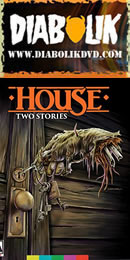

HOUSE II: THE SECOND STORY HOUSE III: THE HORROR SHOW HOUSE IV
HOUSE
Color, 1986, 92m.
Directed by Steve Miner
Starring William Katt, George Wendt, Kay Lenz, Richard Moll
Color, 1987, 88m.
Directed by Ethan Wiley
Starring Arye Gross, Jonathan Stark, Royal Dano, John Ratzenberger, Lar Park-Lincoln, Amy Yasbeck, Bill Maher
Arrow Video (Blu-ray & DVD) (US RA/RB HD/NTSC) / WS (1.85:1) (16:9), Anchor Bay/Image (DVD) (US R1 NTSC) / WS (1.78:1) (16:9)
Color, 1989, 95m.
Directed by James Isaac
Starring Lance Henriksen, Brion James, Rita Taggert, Dedee Pfeiffer, Aron Eisenberg, Thom Bray, Matt Clark, Lawrence Tierney
Arrow Video (Blu-ray & DVD) (US RB/R2 HD/NTSC), Scream Factory (Blu-ray) (US RA HD), Anchor Bay (DVD) (UK R2 PAL) / WS (1.85:1) (16:9)
Color, 1992, 95m.
Directed by Lewis Abernathy
Starring Terri Treas, William Katt, Scott Burkholder, Denny Dillon, Melissa Clayton, Dabbs Greer, Ned Romero
Arrow Video (Blu-ray & DVD) (US RB/R2 HD/NTSC), Anchor Bay (DVD) (UK R2 PAL) / WS (1.85:1) (16:9), Splendid Film (DVD) (Germany R2 PAL)




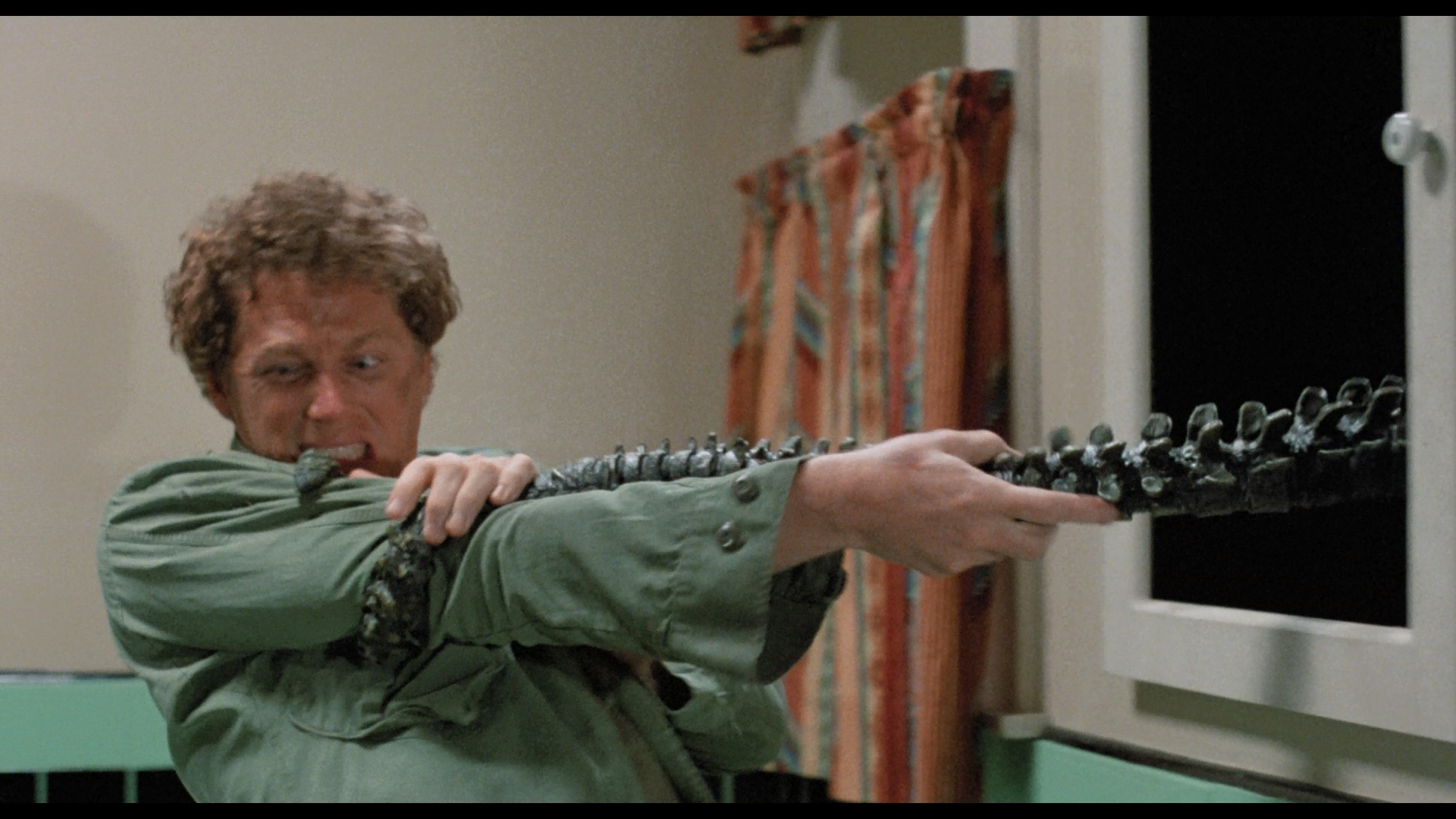
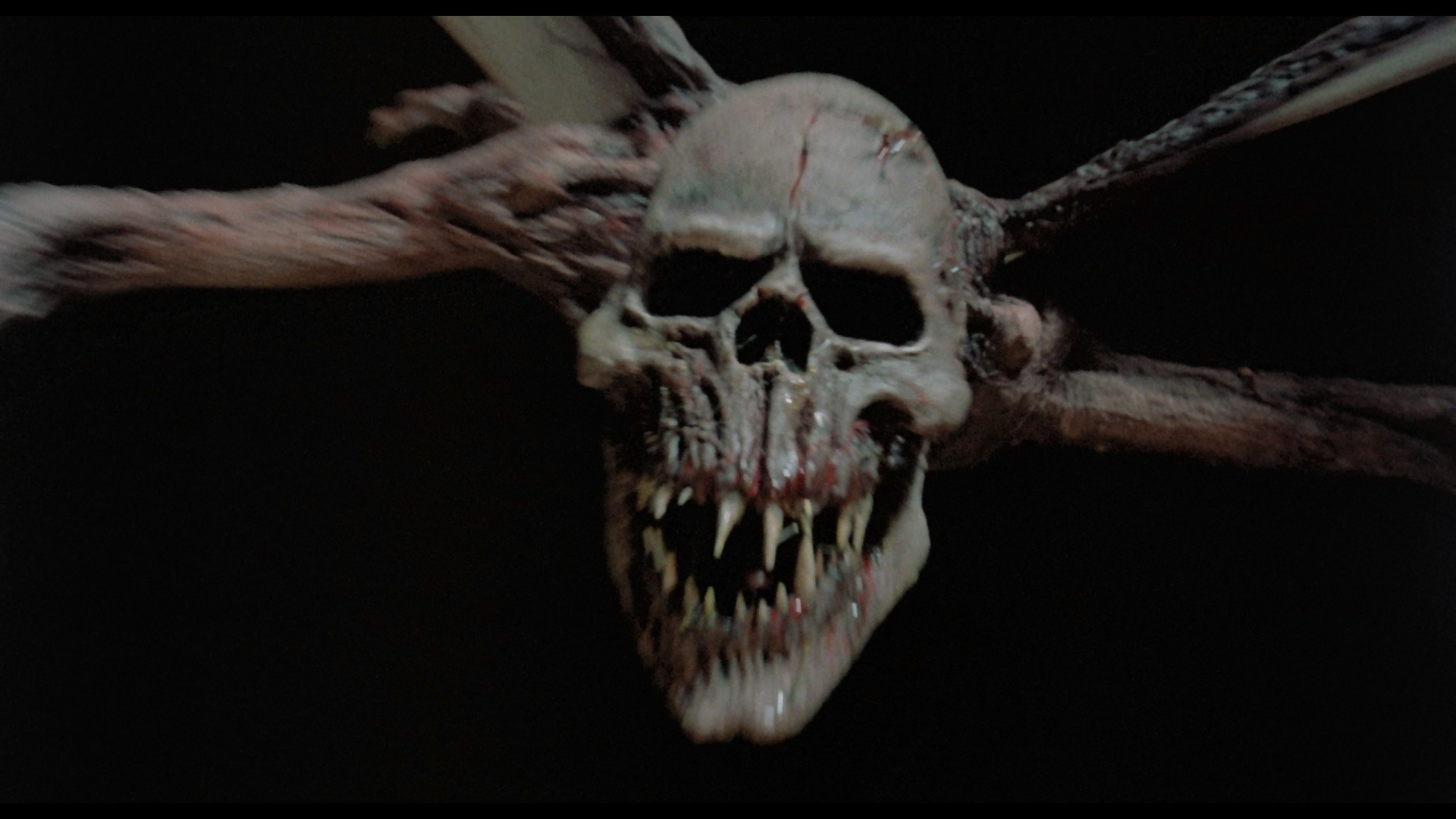
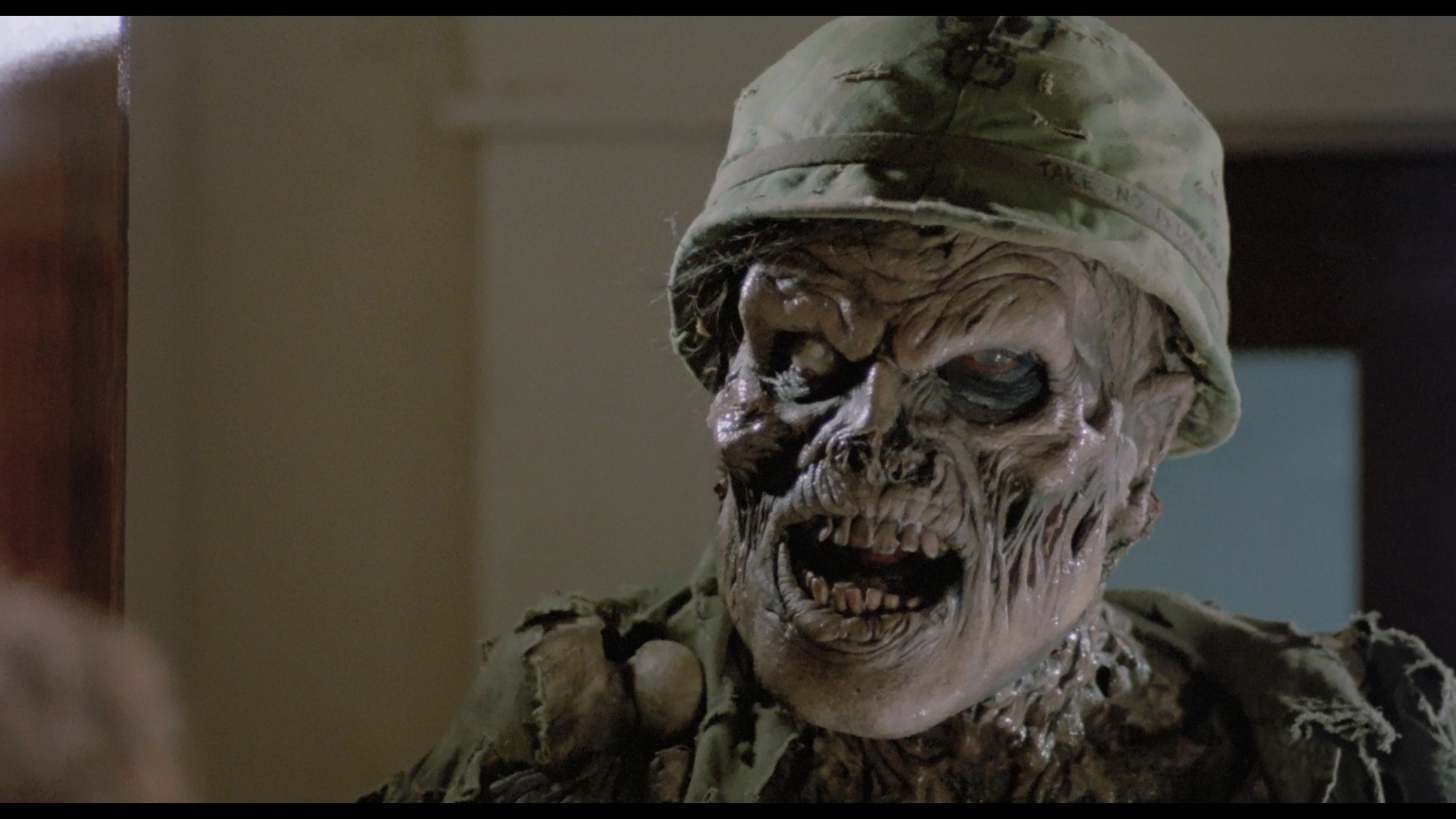
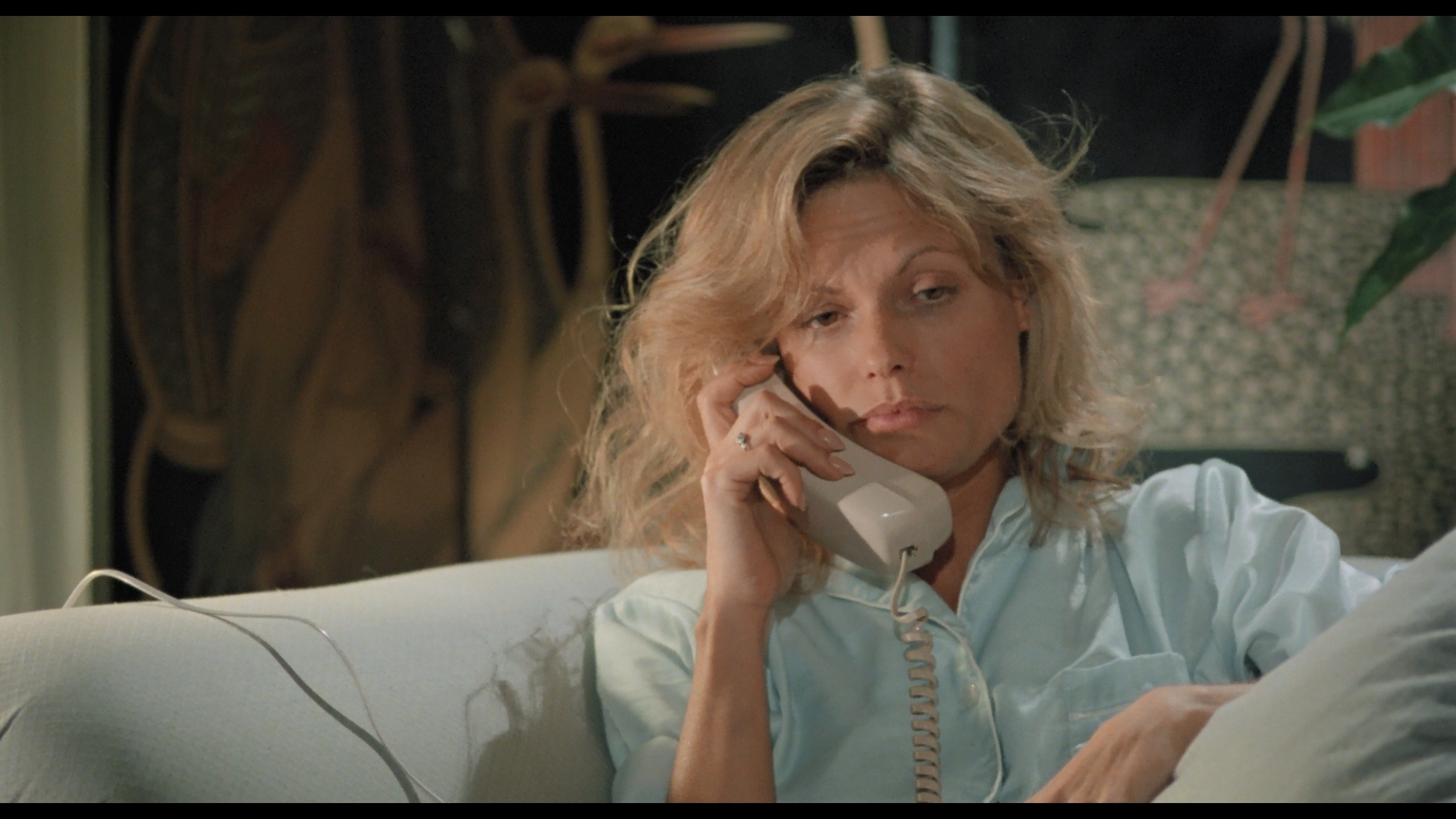
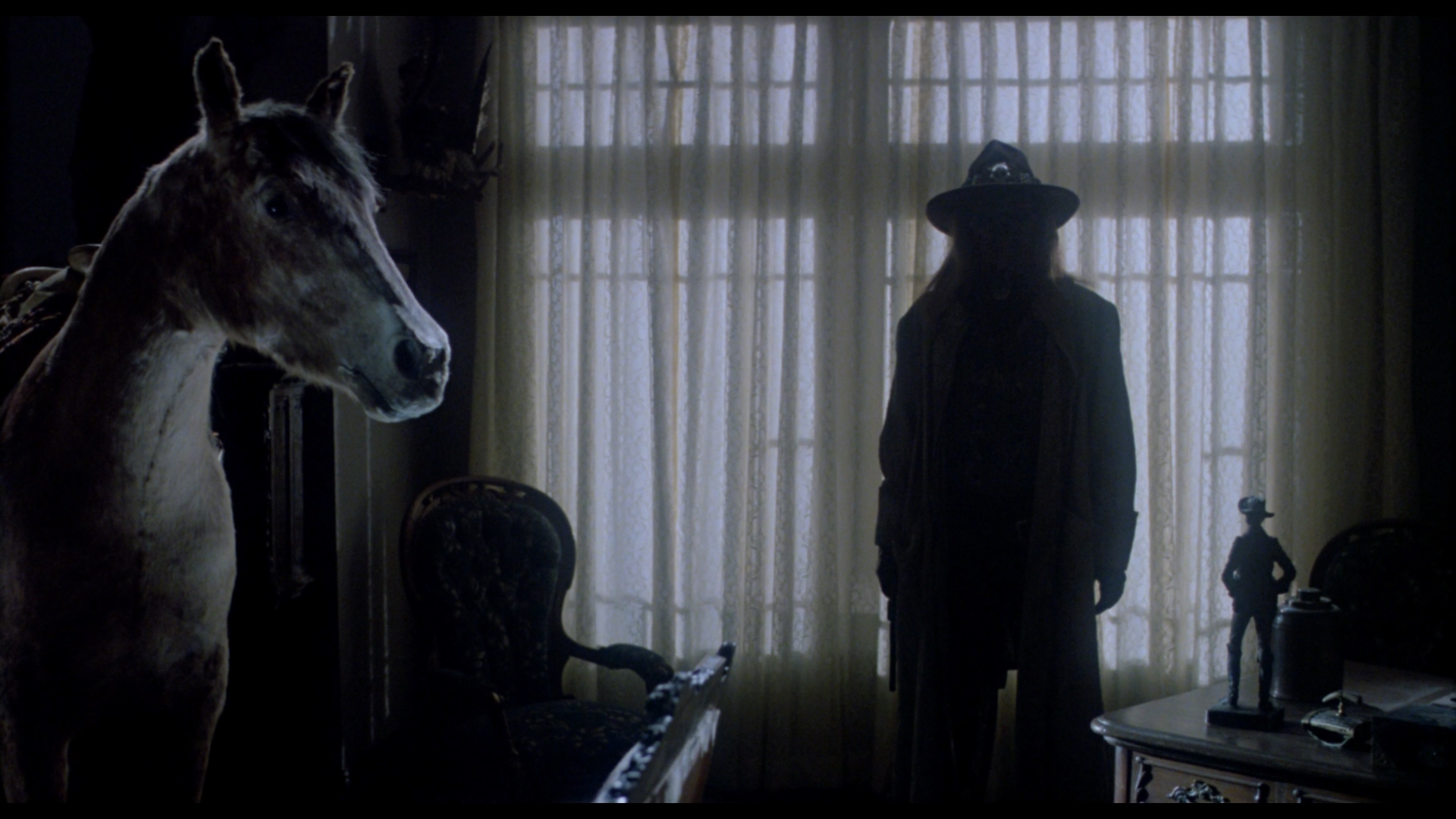
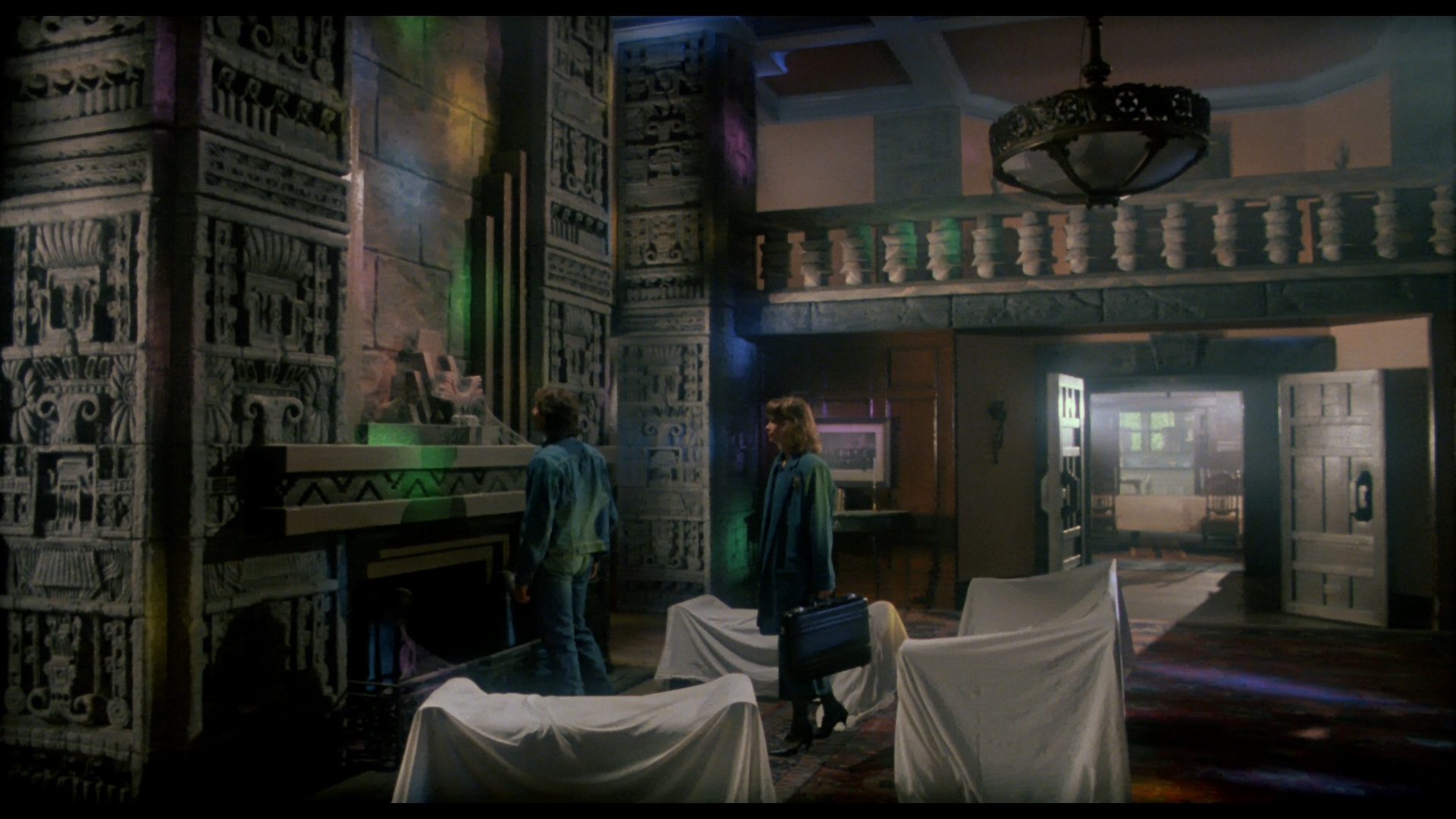 A surprise box office champ in its opening weekend, House was naturally followed by a sequel, House II: The Second Story. Despite the title, the second film really has nothing to do with the first film, intended instead as more of a continuing house-oriented series of horror films in the same vein as John Carpenter's experiment with Halloween III: Season of the Witch.
Derided at the time as a lousy sequel, House II really isn't, but it also fall well outside the horror genre in a realm better described as comedic fantasy. The film spins its loosely connected vignettes around a magical crystal skull which has become the holy grail of Gramps (Dano), who, unfortunately, is long dead... and looks it. His yuppie descendant, Jesse (Gross), moves into the jinxed house with his record exec wife and, along with the rather snotty Charlie (Fright Night's Stark), embarks on a journey through time and space. Neanderthals, Aztec warriors, oogy boogy creatures, and even a "caterpuppy" flit across the screen, which is also occupied by hamming from a young Bill Maher, along with another Cheers alumnus, John Ratzenberger, as a comical electrician. '80s genre fans will also get a kick out of seeing juicy parts for Lar Park-Lincoln (Friday the 13th Part VII: The New Blood), playing bitchy quite well, and the gorgeous Amy Yasbeck, who seemed to pop up on every late '80s and '90s TV show. It's all harmless, nonsensical popcorn fluff, but don't expect anything more.
A surprise box office champ in its opening weekend, House was naturally followed by a sequel, House II: The Second Story. Despite the title, the second film really has nothing to do with the first film, intended instead as more of a continuing house-oriented series of horror films in the same vein as John Carpenter's experiment with Halloween III: Season of the Witch.
Derided at the time as a lousy sequel, House II really isn't, but it also fall well outside the horror genre in a realm better described as comedic fantasy. The film spins its loosely connected vignettes around a magical crystal skull which has become the holy grail of Gramps (Dano), who, unfortunately, is long dead... and looks it. His yuppie descendant, Jesse (Gross), moves into the jinxed house with his record exec wife and, along with the rather snotty Charlie (Fright Night's Stark), embarks on a journey through time and space. Neanderthals, Aztec warriors, oogy boogy creatures, and even a "caterpuppy" flit across the screen, which is also occupied by hamming from a young Bill Maher, along with another Cheers alumnus, John Ratzenberger, as a comical electrician. '80s genre fans will also get a kick out of seeing juicy parts for Lar Park-Lincoln (Friday the 13th Part VII: The New Blood), playing bitchy quite well, and the gorgeous Amy Yasbeck, who seemed to pop up on every late '80s and '90s TV show. It's all harmless, nonsensical popcorn fluff, but don't expect anything more.
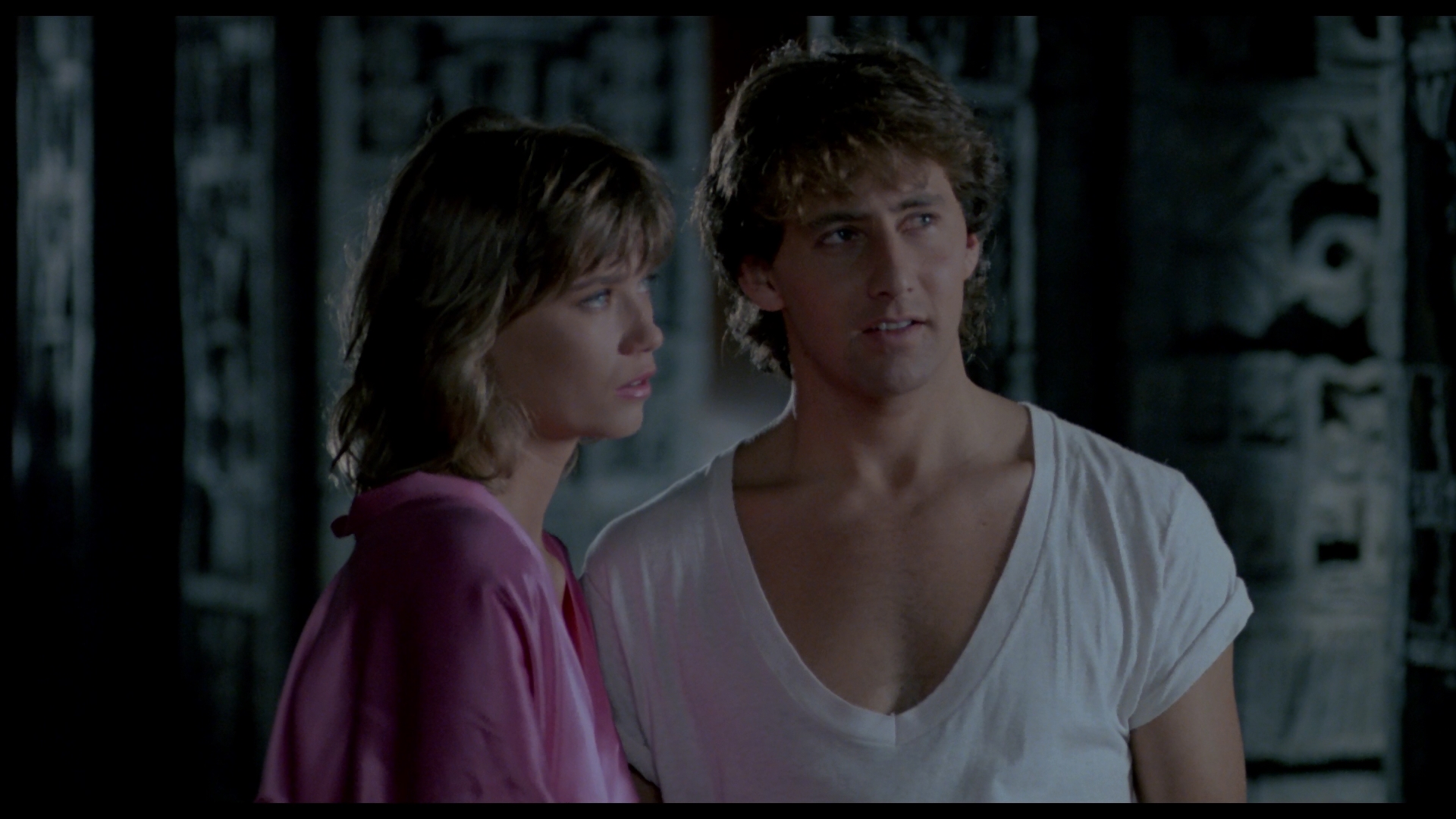 presentation
presentation  was the first worthwhile edition out there, and the first 20,000 units came with both films contained in one case. The first House gets most of the attention in this set, of course, kicking off with a very lively feature length commentary by Miner, Cunningham, Wiley (who went on to direct the second film), and Katt. All of the men have fond memories about the film and go into detail about how they went about constructing the crowd pleaser despite rampant confused reactions from the suits in charge. Wiley and Cunningham return for commentary on House II, and while they have to strain a lot more to fill the time, they still have a few good anecdotes to share about putting together an essentially unrelated sequel to an unexpected smash. Both films feature good anamorphic transfers and mono audio tracks. Other extras include "The Making of House," a 12-minute promotional featurette used to promote the theatrical release. A combination of cast and crew interviews with footage of special effects creation, this is an interesting if superficial overview of the production. You also get two trailers for House (the second of which appears to be lifted off a very ragged, third generation VHS tape), one trailer for House II, and a surprisingly extensive, often hilarious gallery of production shots from the first film.
A no-frills version was later dumped out on DVD by Image Entertainment as part of its very lazy line of New World releases and can be skipped entirely.
was the first worthwhile edition out there, and the first 20,000 units came with both films contained in one case. The first House gets most of the attention in this set, of course, kicking off with a very lively feature length commentary by Miner, Cunningham, Wiley (who went on to direct the second film), and Katt. All of the men have fond memories about the film and go into detail about how they went about constructing the crowd pleaser despite rampant confused reactions from the suits in charge. Wiley and Cunningham return for commentary on House II, and while they have to strain a lot more to fill the time, they still have a few good anecdotes to share about putting together an essentially unrelated sequel to an unexpected smash. Both films feature good anamorphic transfers and mono audio tracks. Other extras include "The Making of House," a 12-minute promotional featurette used to promote the theatrical release. A combination of cast and crew interviews with footage of special effects creation, this is an interesting if superficial overview of the production. You also get two trailers for House (the second of which appears to be lifted off a very ragged, third generation VHS tape), one trailer for House II, and a surprisingly extensive, often hilarious gallery of production shots from the first film.
A no-frills version was later dumped out on DVD by Image Entertainment as part of its very lazy line of New World releases and can be skipped entirely.
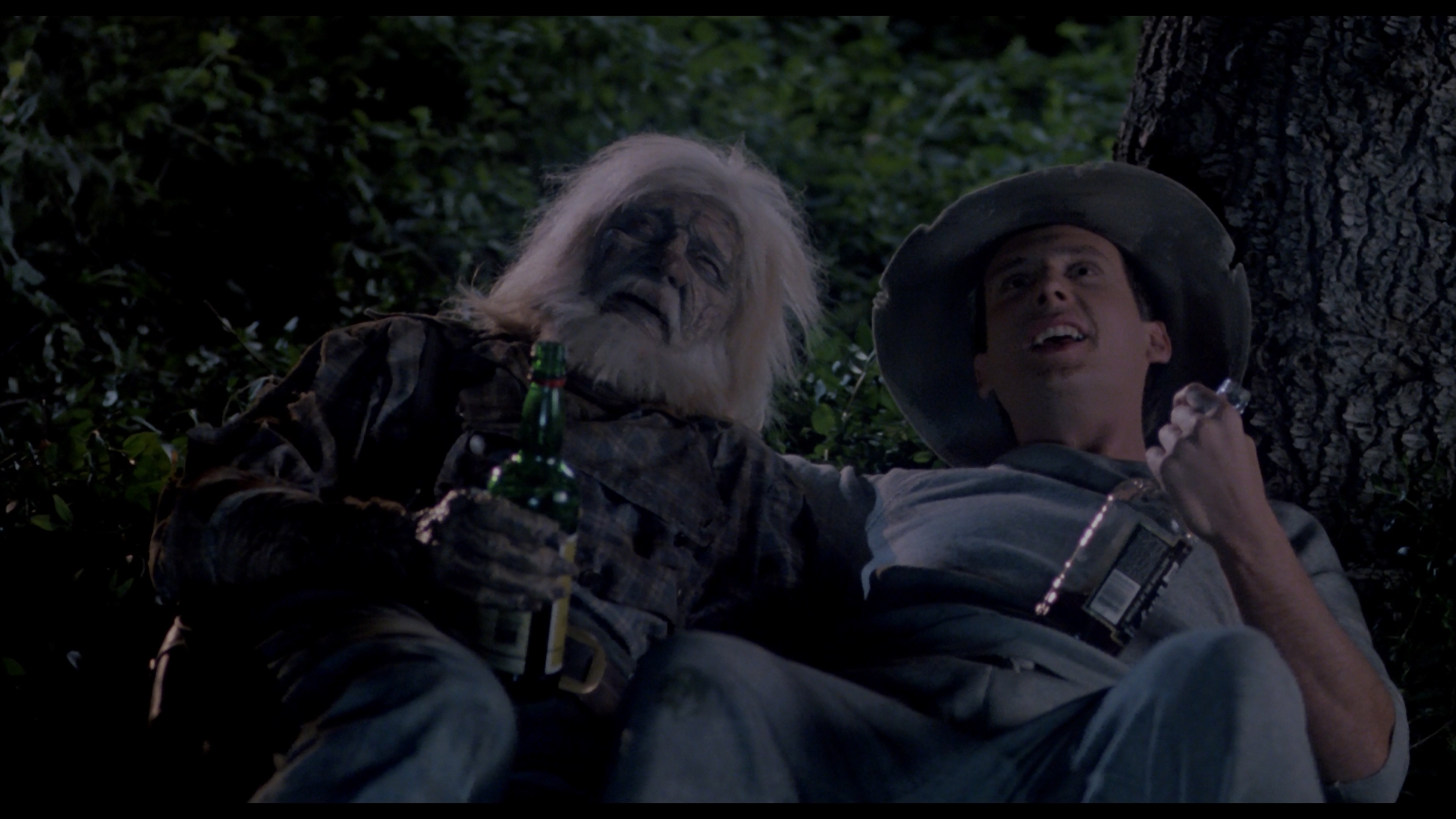 Arrow Video brought both films to Blu-ray in the U.S. with a Region A set entitled House: Two Stories, while the U.K. got an expanded dual-format Region B and DVD set, House: The Complete Collection, adding on House III (better known as The Horror Show, in its uncensored form for the first time on Blu-ray) and House IV: The Repossession. (Note that despite the aforementioned region coding touted on the packaging, it appears all disc configurations will play on Region A or B players so far.) Touted as new 2K restorations, the first two films look terrific with additional image info visible in the 1.85:1 framing (versus the reframed 1.78:1 seen earlier) and very strong colors and detail throughout, looking especially healthy given the usual look of mid-'80s New World titles on video and even on celluloid. The second film has a softer, darker, more diffused look so it doesn't pop as much, but what's here is accurate to the low-key appearance it exhibited in theaters. The first film features DTS-HD MA English 5.1, stereo, and theatrical mono options with optional English subtitles, and if you're not an audio purist, the surround mix is a lot of fun with more breathing room for Manfredini's score and some nifty directional effects.
Arrow Video brought both films to Blu-ray in the U.S. with a Region A set entitled House: Two Stories, while the U.K. got an expanded dual-format Region B and DVD set, House: The Complete Collection, adding on House III (better known as The Horror Show, in its uncensored form for the first time on Blu-ray) and House IV: The Repossession. (Note that despite the aforementioned region coding touted on the packaging, it appears all disc configurations will play on Region A or B players so far.) Touted as new 2K restorations, the first two films look terrific with additional image info visible in the 1.85:1 framing (versus the reframed 1.78:1 seen earlier) and very strong colors and detail throughout, looking especially healthy given the usual look of mid-'80s New World titles on video and even on celluloid. The second film has a softer, darker, more diffused look so it doesn't pop as much, but what's here is accurate to the low-key appearance it exhibited in theaters. The first film features DTS-HD MA English 5.1, stereo, and theatrical mono options with optional English subtitles, and if you're not an audio purist, the surround mix is a lot of fun with more breathing room for Manfredini's score and some nifty directional effects.
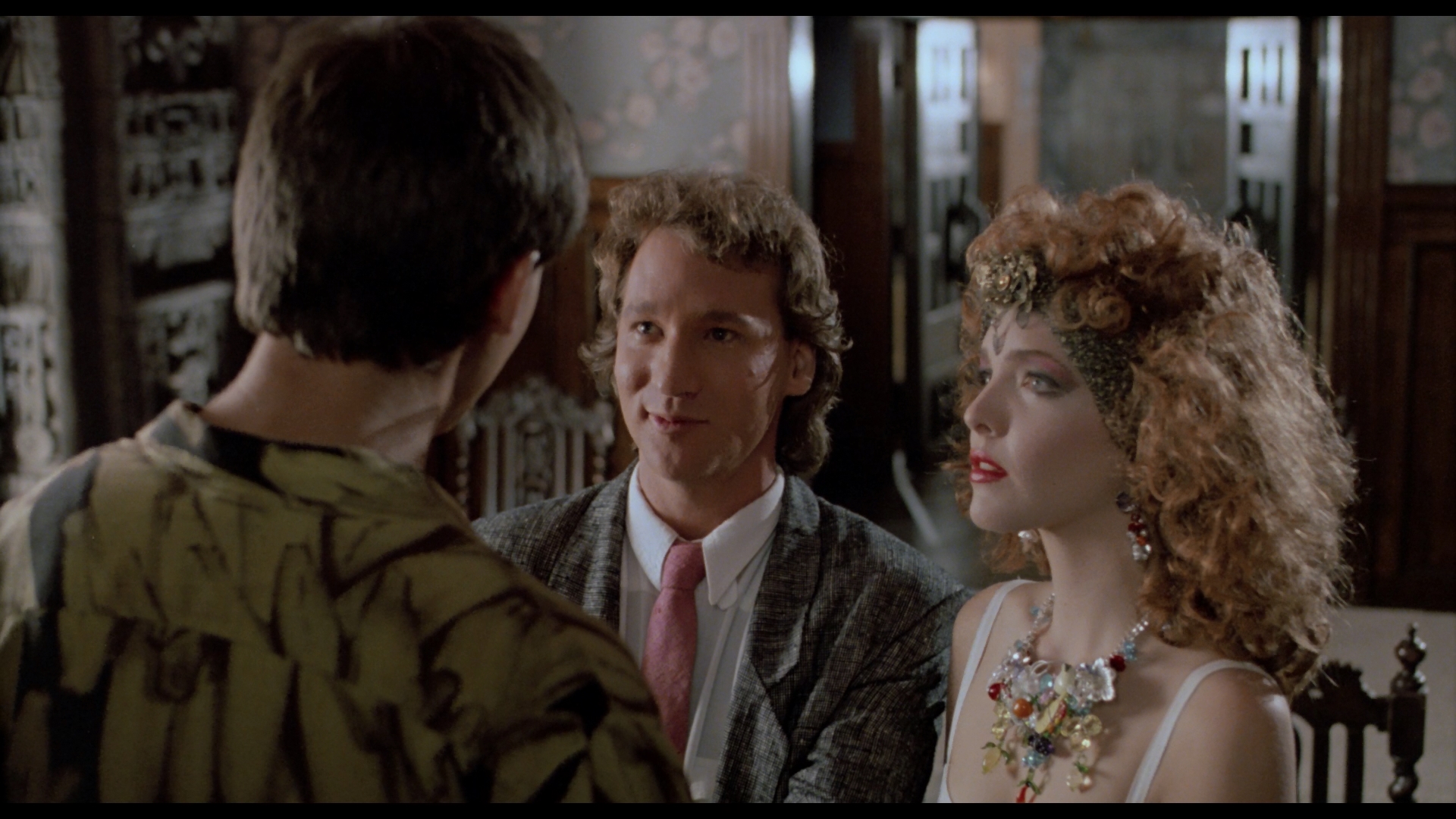 Barney Burman, Brian Wade, James Belohovek, Shannon Shea, Kirk Thatcher, and Bill Sturgeon.
Barney Burman, Brian Wade, James Belohovek, Shannon Shea, Kirk Thatcher, and Bill Sturgeon. 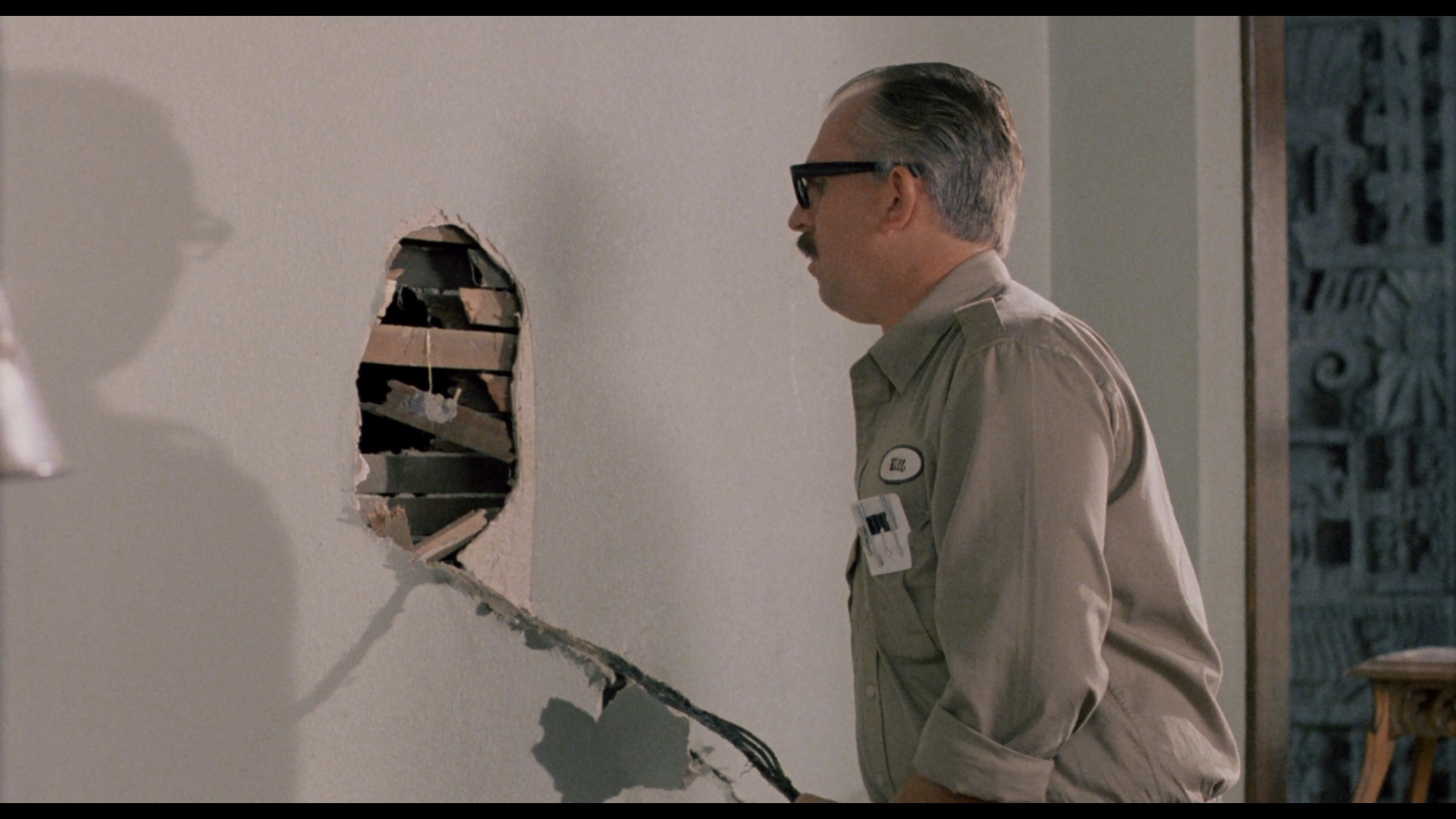 If you're a House fan, this is serious pay dirt with stories about on-set snafus (including a stern warning from the fire department) and extensive looks at the old-school monster effects that will have you going back for a reviewing of the main feature right away. It's surprising how little overlaps with any of the preexisting extras, and everyone seems to have a very warm place in their hearts for this film. And despite the film's puzzling R rating, they're correct in that it would be a great title to show to a young horror fan interested in '80s monster horror.
If you're a House fan, this is serious pay dirt with stories about on-set snafus (including a stern warning from the fire department) and extensive looks at the old-school monster effects that will have you going back for a reviewing of the main feature right away. It's surprising how little overlaps with any of the preexisting extras, and everyone seems to have a very warm place in their hearts for this film. And despite the film's puzzling R rating, they're correct in that it would be a great title to show to a young horror fan interested in '80s monster horror.
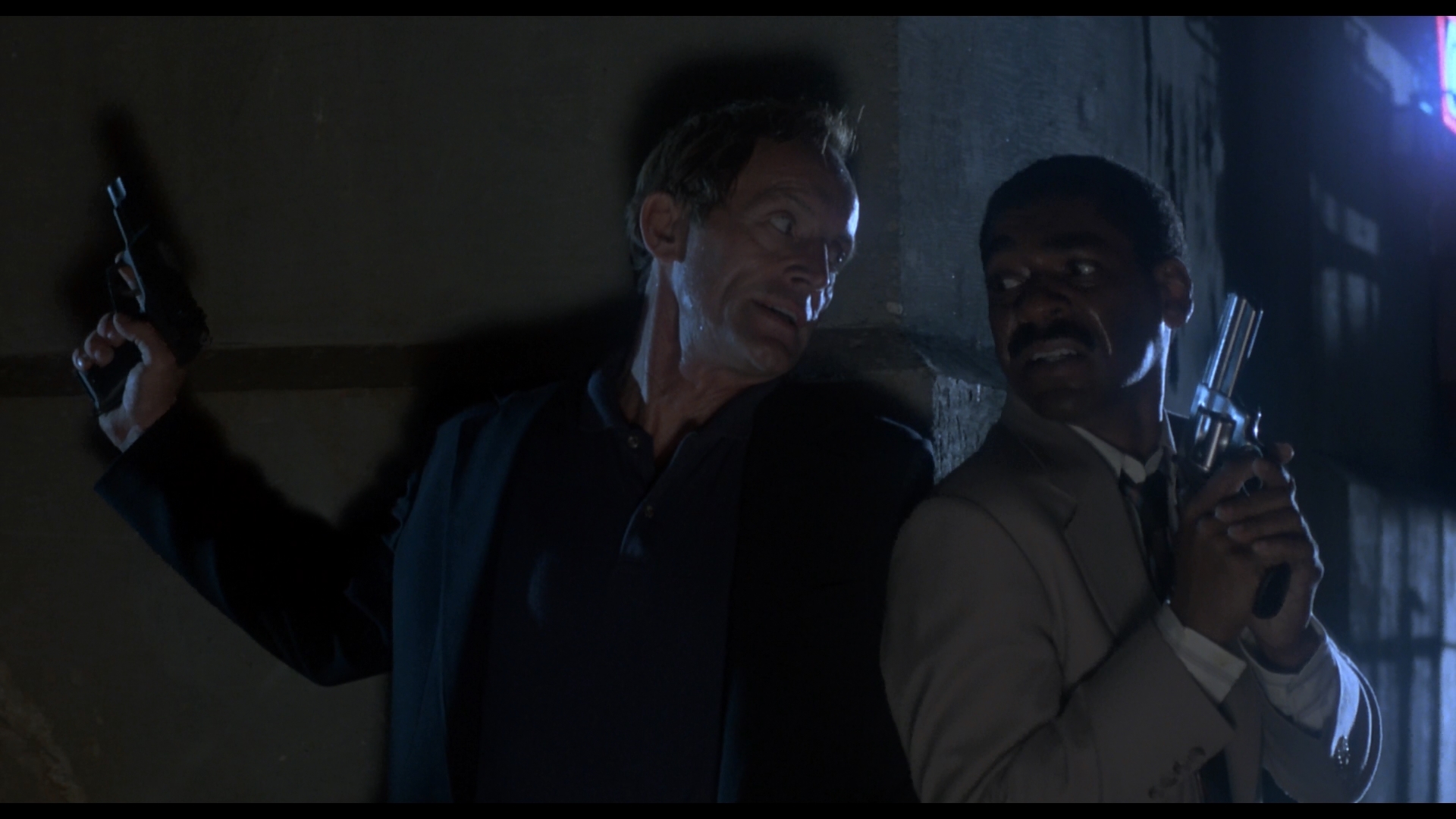 First released on Blu-ray by Scream Factory in 2013 in its edited, R-rated U.S. form, The Horror Show / House III has nothing to do with either previous film, though the characters do live in a house. This film
First released on Blu-ray by Scream Factory in 2013 in its edited, R-rated U.S. form, The Horror Show / House III has nothing to do with either previous film, though the characters do live in a house. This film 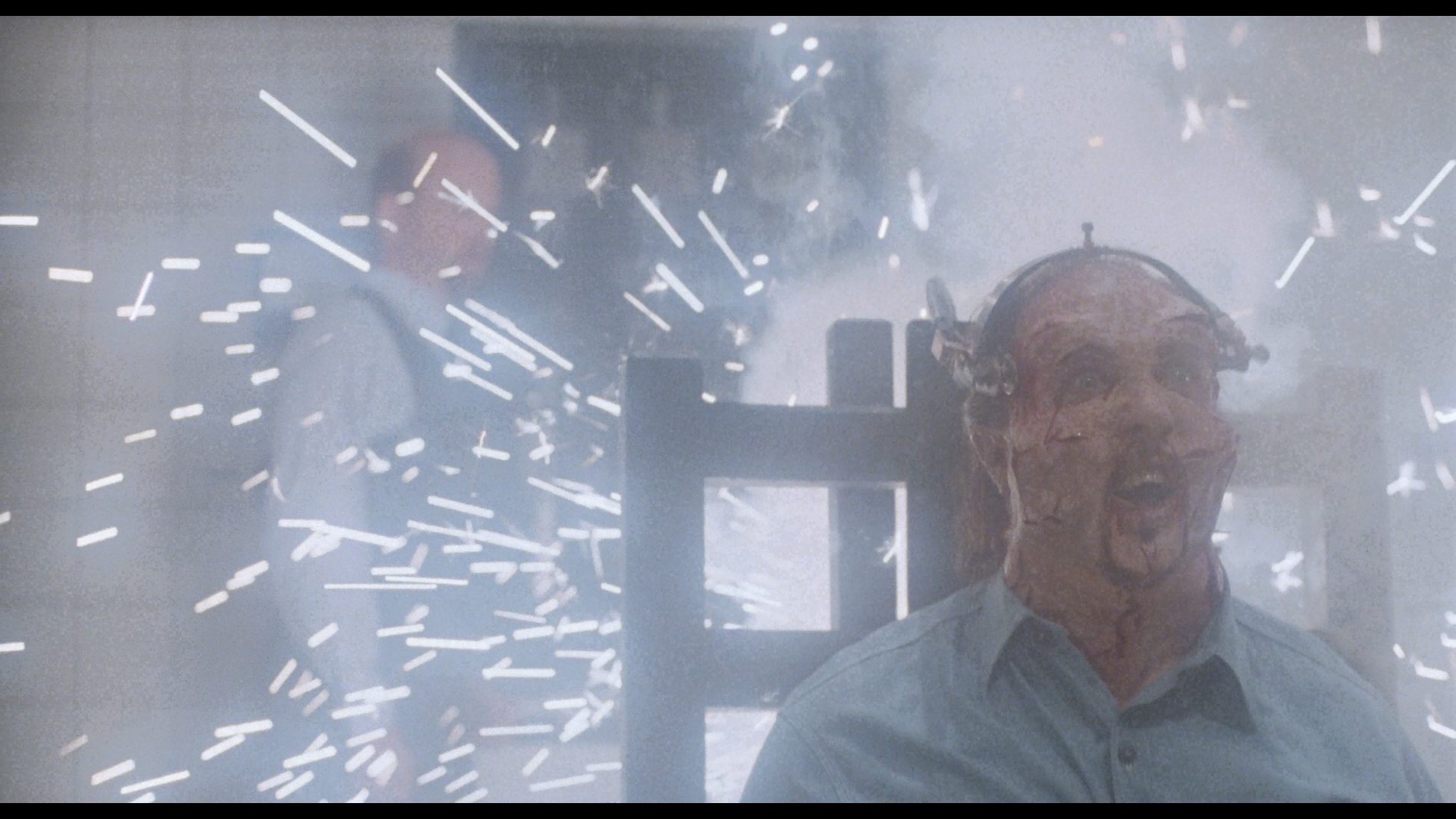 was part of a short-lived cycle of late '80s horror offerings about executed criminals coming back to terrorize the living (see also: Shocker, Prison, The First Power). All but one of those films revolved around the supernatural aftermath of death via the electric chair, and this one (at least in its uncensored European form) took that idea to its most gruesome extremes with an extended, vein-bursting sequence that would stand as the most harrowing of its kind until The Green Mile came along. In this case the executed party is Max Jenke (Blade Runner's James), who haunts the dreams of Detective Lucas McCarthy (Henriksen) ever since their confrontation in a diner where a cleaver-wielding Jenke has slaughtered three cops and an innocent girl. Lucas has a happy family including a loving wife, Donna (Taggart), horny teenaged daughter Bonnie (Vamp's Pfeiffer), and fledgling scam artist and Guns N' Roses fan Scott (Eisenberg). Jenke's actual execution doesn't go as planned with the serial killer catching on fire and bursting from his straps to threaten Lucas one last time before expiring, which leads parapsychologist Peter Campbell (Prince of Darkness's Bray) to do some further investigating. After witnessing Jenke's spirit bursting out of his body, Peter warns the endangered cop but finds his pleas completely ignored. Soon the supernatural psycho is infiltrating Lucas's reality and starting a new killing spree that might be unstoppable this time.
was part of a short-lived cycle of late '80s horror offerings about executed criminals coming back to terrorize the living (see also: Shocker, Prison, The First Power). All but one of those films revolved around the supernatural aftermath of death via the electric chair, and this one (at least in its uncensored European form) took that idea to its most gruesome extremes with an extended, vein-bursting sequence that would stand as the most harrowing of its kind until The Green Mile came along. In this case the executed party is Max Jenke (Blade Runner's James), who haunts the dreams of Detective Lucas McCarthy (Henriksen) ever since their confrontation in a diner where a cleaver-wielding Jenke has slaughtered three cops and an innocent girl. Lucas has a happy family including a loving wife, Donna (Taggart), horny teenaged daughter Bonnie (Vamp's Pfeiffer), and fledgling scam artist and Guns N' Roses fan Scott (Eisenberg). Jenke's actual execution doesn't go as planned with the serial killer catching on fire and bursting from his straps to threaten Lucas one last time before expiring, which leads parapsychologist Peter Campbell (Prince of Darkness's Bray) to do some further investigating. After witnessing Jenke's spirit bursting out of his body, Peter warns the endangered cop but finds his pleas completely ignored. Soon the supernatural psycho is infiltrating Lucas's reality and starting a new killing spree that might be unstoppable this time.
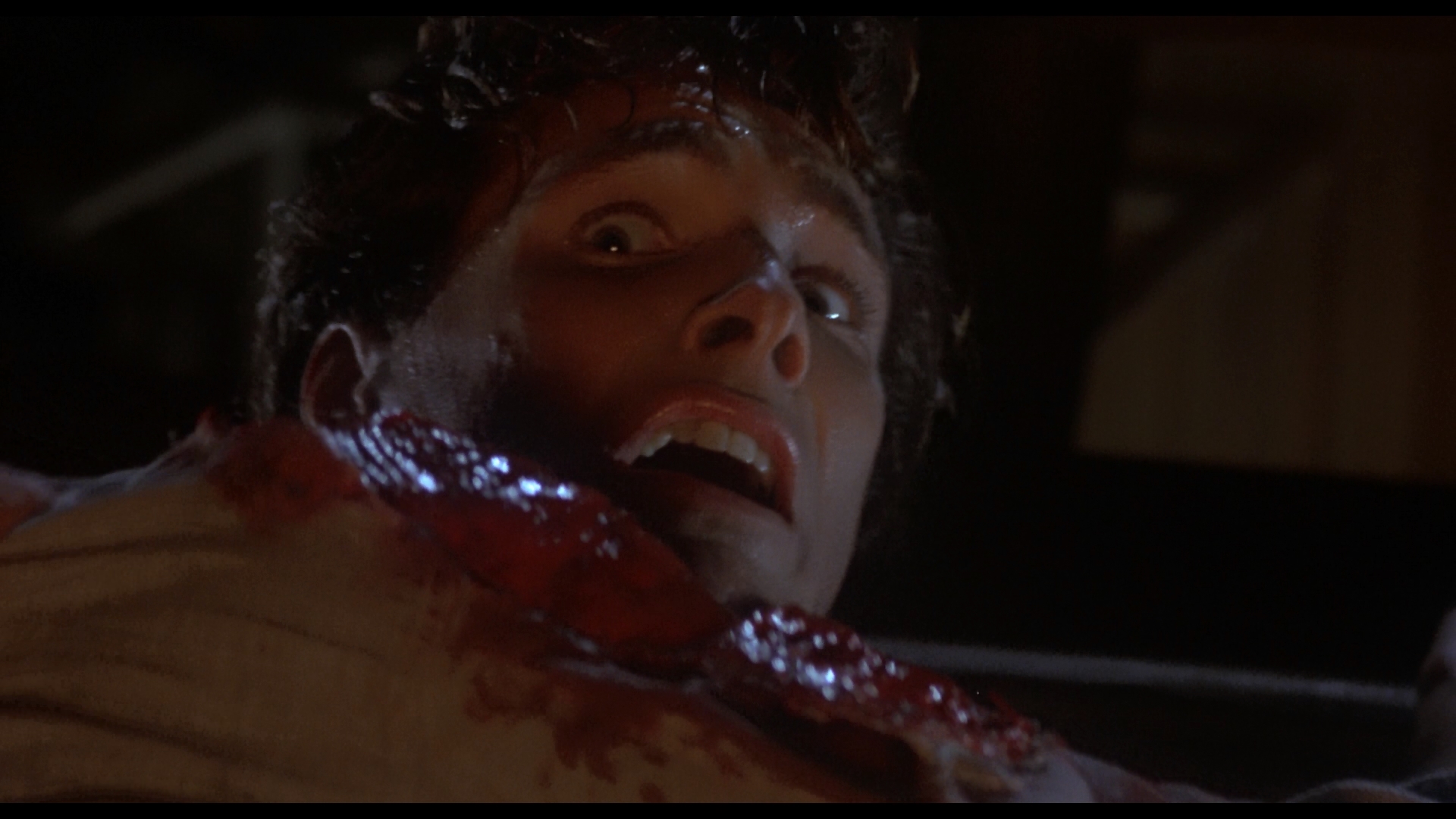 example of the confused state of the horror genre around the end of the decade, The Horror Show is a deeply flawed film with ridiculous padding, sludgy pacing, an overabundance of fake scares, and no consistent ground rules of any kind for
example of the confused state of the horror genre around the end of the decade, The Horror Show is a deeply flawed film with ridiculous padding, sludgy pacing, an overabundance of fake scares, and no consistent ground rules of any kind for 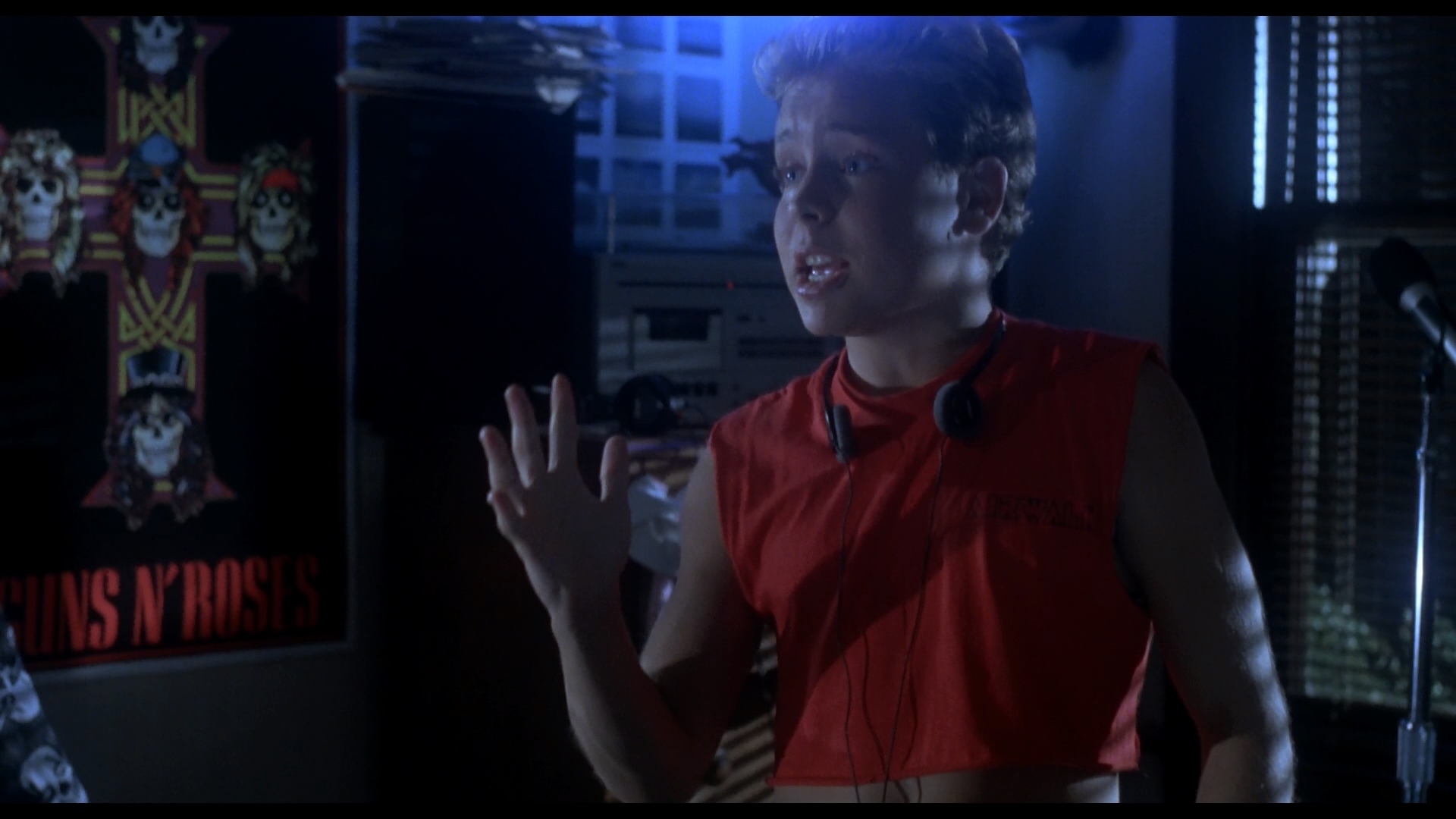 Jenke's villainy with him switching from ghost to physical presence to a morphing dream boogeyman (including a cooked turkey!) with no rhyme or reason. Fortunately it also has Henriksen and James delivering very spirited performances, the always adorable Pfeiffer, and plenty of old school gore with some of the reddest, most syrupy fake blood you've ever seen. The obvious swipes from A Nightmare on Elm Street are more amusing than anything else, and for such a famously troubled production (it swapped directors halfway through and was heavily promoted in Fangoria and various fanzines with stills from scenes that never materialized, most famously Henrikesen pulling his chest open), it still makes for an enjoyable time waster if you don't expect it to make any sense at all.
Jenke's villainy with him switching from ghost to physical presence to a morphing dream boogeyman (including a cooked turkey!) with no rhyme or reason. Fortunately it also has Henriksen and James delivering very spirited performances, the always adorable Pfeiffer, and plenty of old school gore with some of the reddest, most syrupy fake blood you've ever seen. The obvious swipes from A Nightmare on Elm Street are more amusing than anything else, and for such a famously troubled production (it swapped directors halfway through and was heavily promoted in Fangoria and various fanzines with stills from scenes that never materialized, most famously Henrikesen pulling his chest open), it still makes for an enjoyable time waster if you don't expect it to make any sense at all.
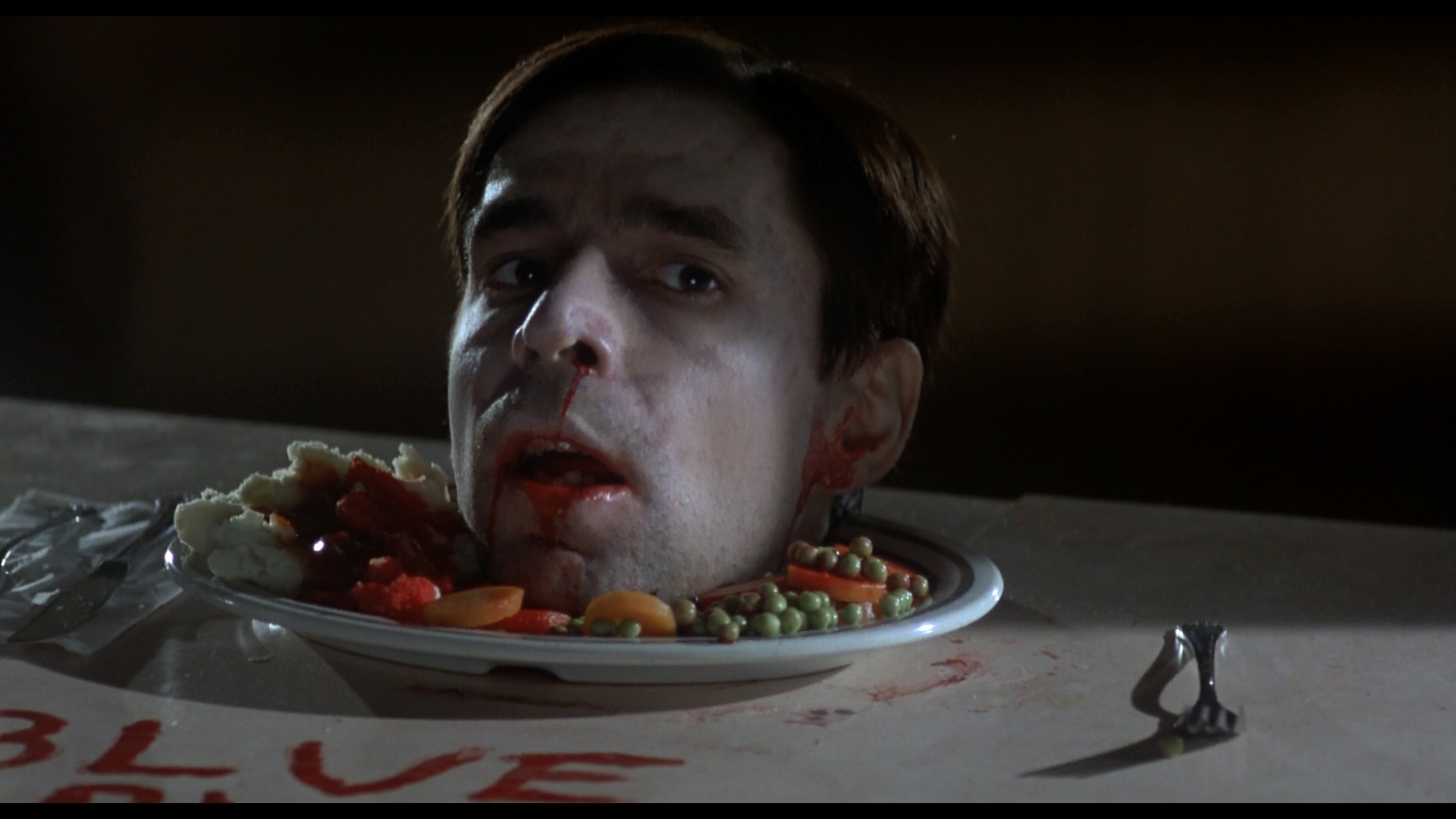 addition of the unrated version (95 mins. 16 secs.) in addition to the R-rated one (94 mins. 19 secs.),
addition of the unrated version (95 mins. 16 secs.) in addition to the R-rated one (94 mins. 19 secs.),
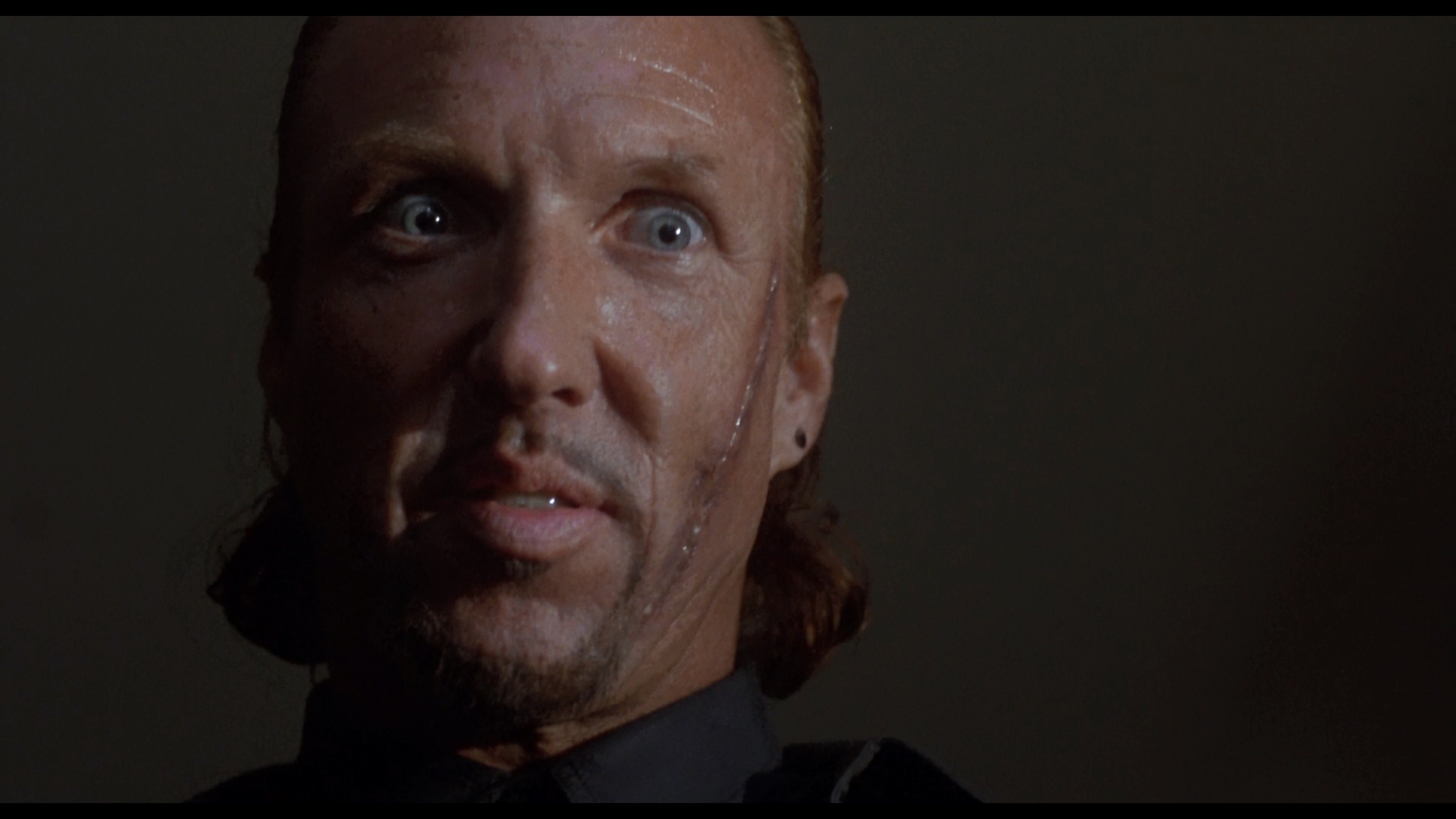
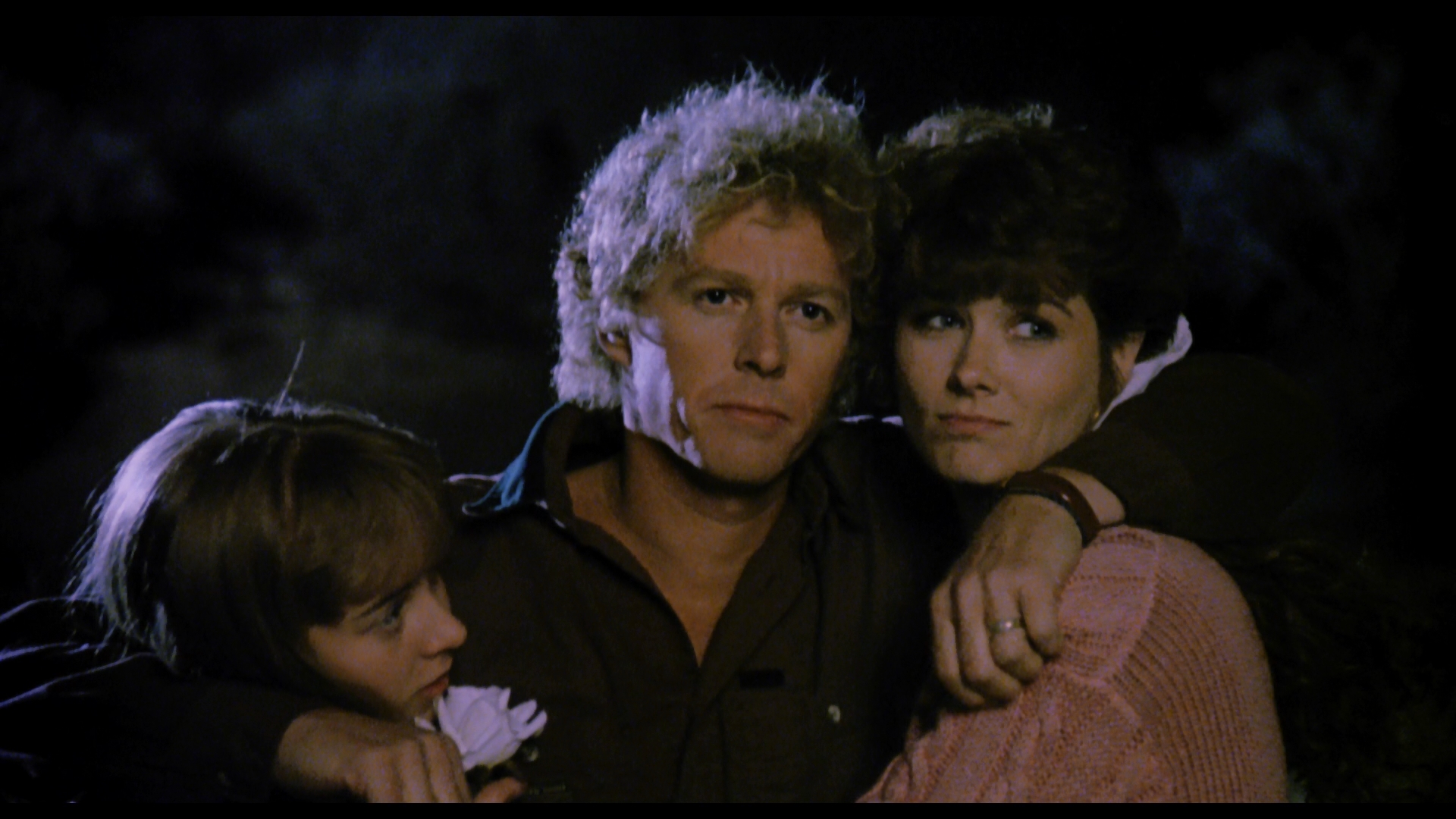 sort-of sequel in the entire series, House IV (also known as House IV: Home Deadly Home and House IV: The Repossession) brings back Katt as Roger Cobb, for the final film in the series to date and the only one released by New Line. This time
sort-of sequel in the entire series, House IV (also known as House IV: Home Deadly Home and House IV: The Repossession) brings back Katt as Roger Cobb, for the final film in the series to date and the only one released by New Line. This time 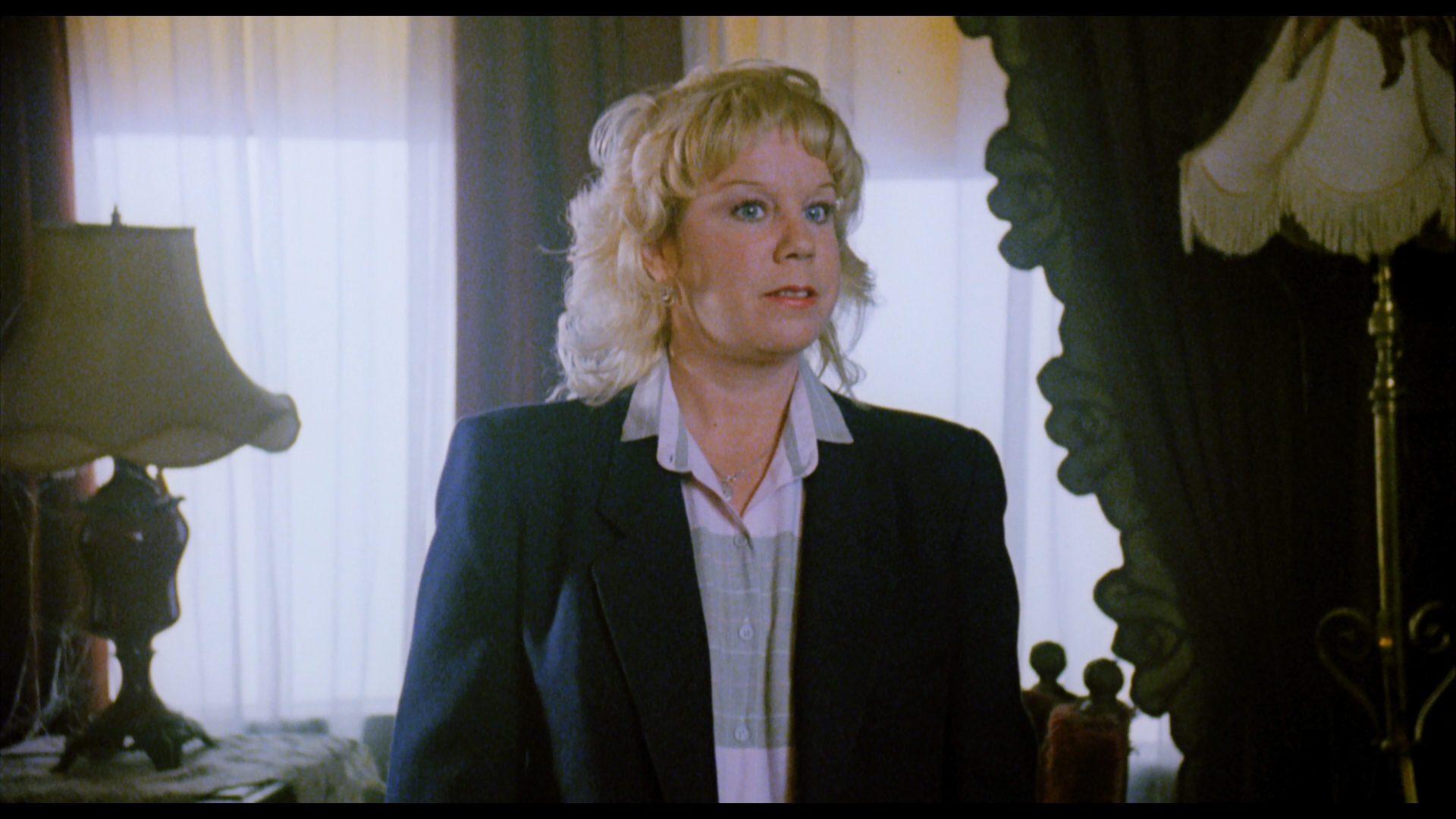 Roger's planning to bring his wife, Kelly (Treas), and their daughter, Laurel (Clayton), back to live at his old family home and refuses to sell the property to help out his financially desperate brother (Burkholder). Following a visit from medicine man Ezra (Romero) involving some strange spiritual advice, the family is involved in a violent car crash that leaves Roger critically injured and Laurel confined to a wheelchair. Kelly has to make the difficult decision to pull Roger off of life support, which leaves her severely traumatized. Both mother and daughter try to make a go of living in the Cobb house by themselves, which is surrounded by quirky neighbors and plagued by inexplicable occurrences like a sentient singing, sauce-barfing pizza (a scene you have to see to believe), charred bodies in mirrors, and rusty bath water that looks a lot like blood. On top of that, a nefarious midget crime lord who sits on a throne(!) has plans to drive Kelly out of the house, which overlaps with the supernatural forces at work in the house itself, apparently built over the land of an Indian burial ground (of course).
Roger's planning to bring his wife, Kelly (Treas), and their daughter, Laurel (Clayton), back to live at his old family home and refuses to sell the property to help out his financially desperate brother (Burkholder). Following a visit from medicine man Ezra (Romero) involving some strange spiritual advice, the family is involved in a violent car crash that leaves Roger critically injured and Laurel confined to a wheelchair. Kelly has to make the difficult decision to pull Roger off of life support, which leaves her severely traumatized. Both mother and daughter try to make a go of living in the Cobb house by themselves, which is surrounded by quirky neighbors and plagued by inexplicable occurrences like a sentient singing, sauce-barfing pizza (a scene you have to see to believe), charred bodies in mirrors, and rusty bath water that looks a lot like blood. On top of that, a nefarious midget crime lord who sits on a throne(!) has plans to drive Kelly out of the house, which overlaps with the supernatural forces at work in the house itself, apparently built over the land of an Indian burial ground (of course).
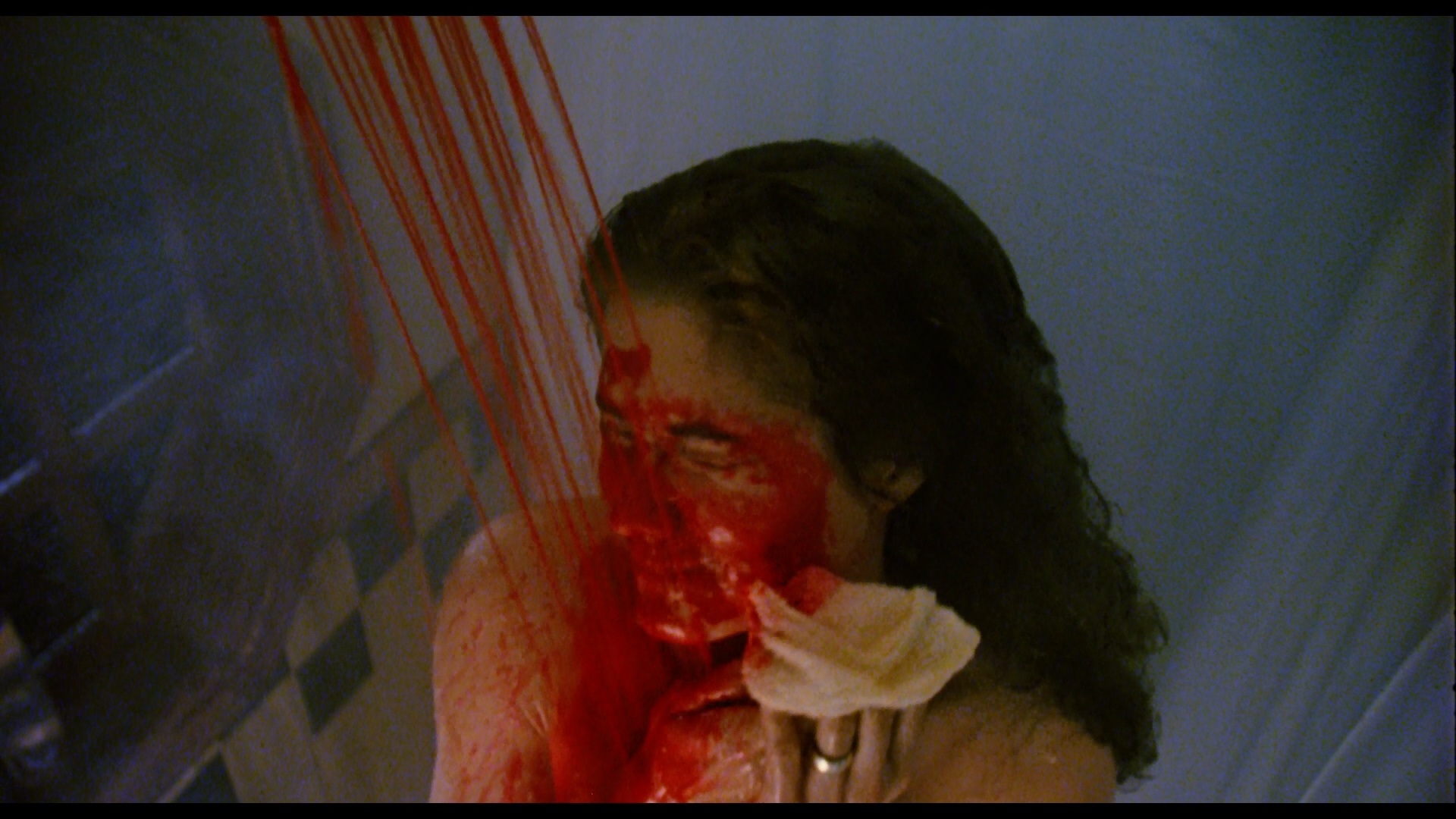
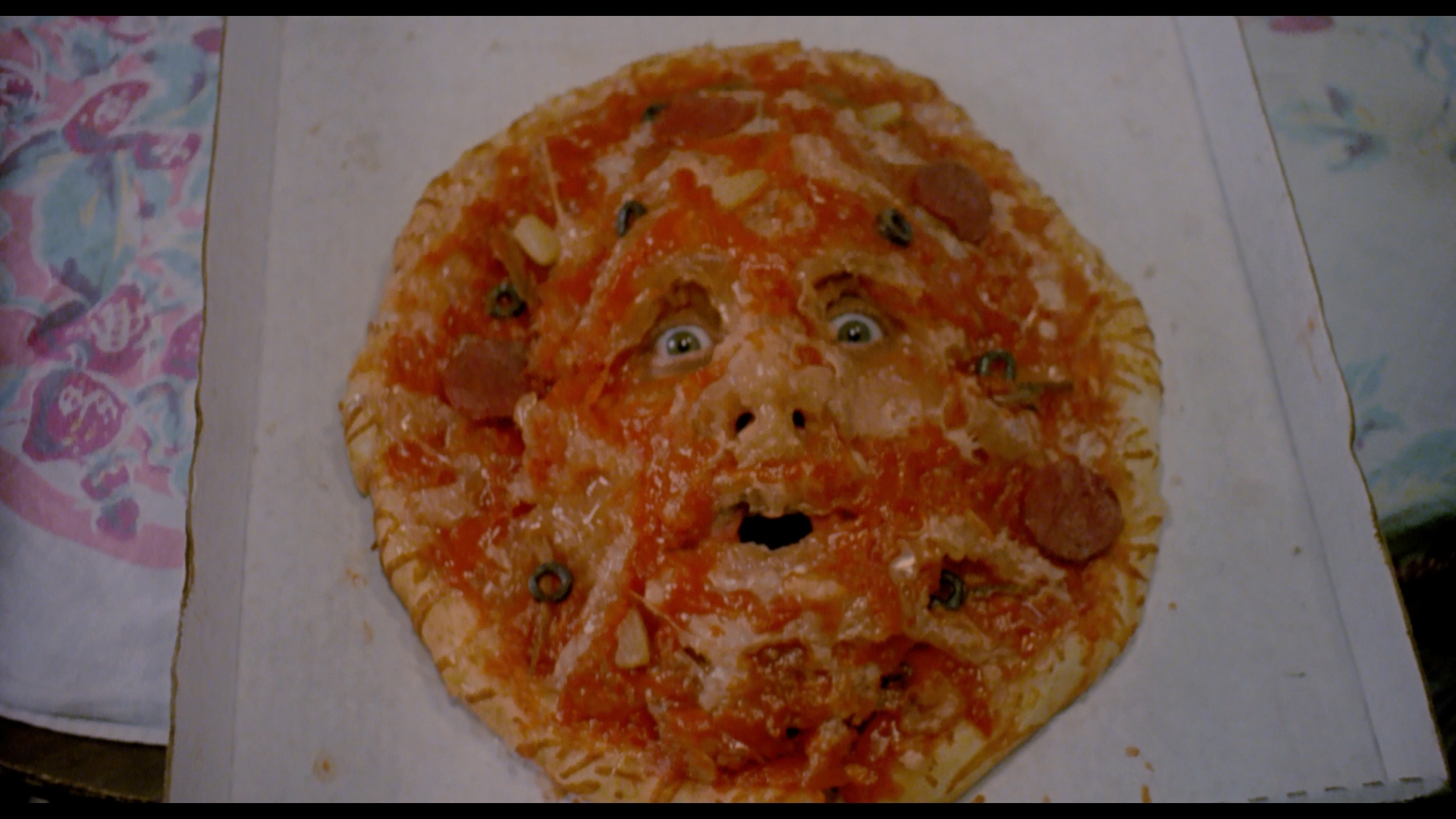 House IV first appeared on DVD in 2004 from Anchor Bay's UK branch with an audio commentary featuring director Lewis Abernathy and moderator David Gregory, which kicks off with a rundown of Joe Bob Briggs' exploitation count for the film and then jumps into discussions about the film's low budget production, Abernathy's prior work on a number of '80s horror films, a surprise celebrity endorsement by phone of the "grossest scene" ever filmed (involving phlegm), and scouting for arid desert locations. The 2017 Arrow version boasts a new 2K transfer like the other titles, though here they're given a very modest film to work with that just barely looks like it was shot on 35mm. The appearance is often murky and drab with chalky whites in many scenes, which may be due to some very substandard film stock more than anything else. That said, it's easily the best this film has ever looked on home video and, unlike the prior Anchor Bay DVD, is completely uncut. A trailer and stills gallery are also included, and yes, this one's been appointed with a hefty new featurette as well: "Home Deadly Home," an extensive 29-minute overview with Cunningham, Abernathy, Treas, Katt, Hodder, and Manfredini covering both this film and a bit about The Horror Show with topics including the late stage Katt's character was added to the script (which was originally complete standalone story), the device of having a strong female as the hero for the only time in the (very loose) series, the connection to The Cheyenne Social Club, and more. And yes, they do the pizza jingle, which Manfredini wrote. The set (in either iteration) comes packaged with a limited 60-page book, The House Companion, featuring archival material and new essays about the series by Simon Barber.
House IV first appeared on DVD in 2004 from Anchor Bay's UK branch with an audio commentary featuring director Lewis Abernathy and moderator David Gregory, which kicks off with a rundown of Joe Bob Briggs' exploitation count for the film and then jumps into discussions about the film's low budget production, Abernathy's prior work on a number of '80s horror films, a surprise celebrity endorsement by phone of the "grossest scene" ever filmed (involving phlegm), and scouting for arid desert locations. The 2017 Arrow version boasts a new 2K transfer like the other titles, though here they're given a very modest film to work with that just barely looks like it was shot on 35mm. The appearance is often murky and drab with chalky whites in many scenes, which may be due to some very substandard film stock more than anything else. That said, it's easily the best this film has ever looked on home video and, unlike the prior Anchor Bay DVD, is completely uncut. A trailer and stills gallery are also included, and yes, this one's been appointed with a hefty new featurette as well: "Home Deadly Home," an extensive 29-minute overview with Cunningham, Abernathy, Treas, Katt, Hodder, and Manfredini covering both this film and a bit about The Horror Show with topics including the late stage Katt's character was added to the script (which was originally complete standalone story), the device of having a strong female as the hero for the only time in the (very loose) series, the connection to The Cheyenne Social Club, and more. And yes, they do the pizza jingle, which Manfredini wrote. The set (in either iteration) comes packaged with a limited 60-page book, The House Companion, featuring archival material and new essays about the series by Simon Barber.